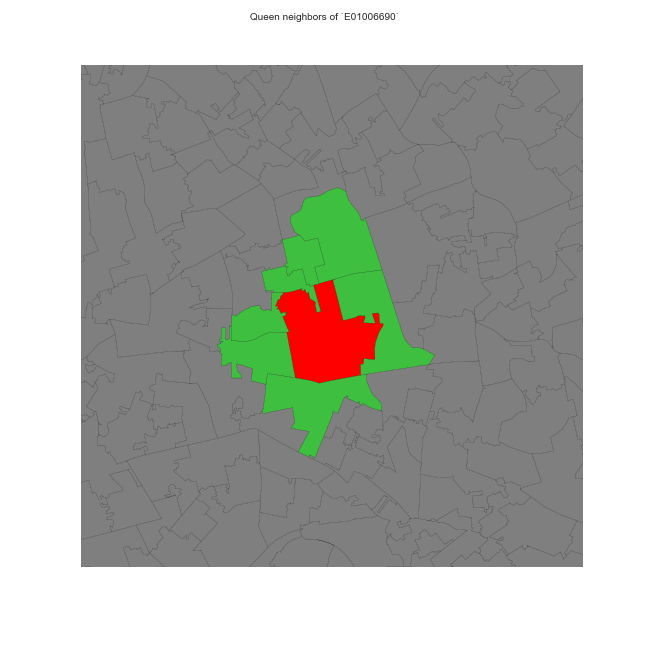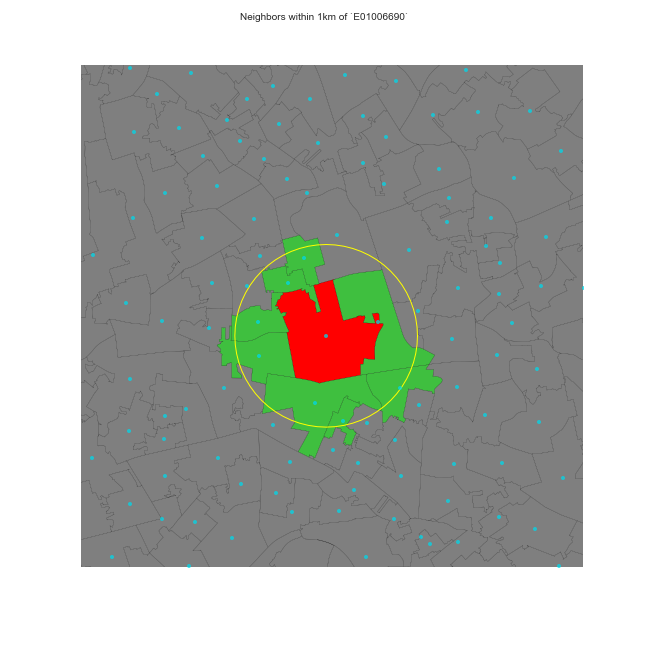Geographic Data Science
What is a neighbor?
A neighbor is “somebody” who is:
- Next door → Contiguity-based Ws
- Close → Distance-based Ws
- In the same “place” as us → Block weights
- …
See Anselin & Rey (2014) for an in-detail discussion and more types of W.
Contiguity-based weights
Sharing boundaries to any extent
- Rook
- Queen
- …
Distance-based weights
Weight is (inversely) proportional to distance between observations
- Inverse distance (threshold)
- KNN (fixed number of neighbors)
- …


Block weights
Weights are assigned based on discretionary rules loosely related to geography
For example:
- LSOAs into MSOAs
- Post-codes within city boundaries
- Counties within states
- …
How much of a neighbor?
No neighbors receive zero weight: wij = 0
Neighbors, it depends, wij can be:
One wij = 1 → Binary
Some proportion (0 < wij < 1, continuous) which can be a function of:
- Distance
- Strength of interaction (e.g. commuting flows, trade, etc.)
- …
Choice of W
Should be based on and reflect the underlying channels of interaction for the question at hand.
Examples:
- Processes propagated by inmediate contact (e.g. disease contagion) → Contiguity weights
- Accessibility → Distance weights
- Effects of county differences in laws → Block weights
Standardization
In some applications (e.g. spatial autocorrelation) it is common to standardize W
The most widely used standardization is row-based: divide every element by the sum of the row:
where wi· is the sum of a row.

A course on Geographic Data Science by Dani Arribas-Bel is licensed under a Creative Commons Attribution-ShareAlike 4.0 International License.